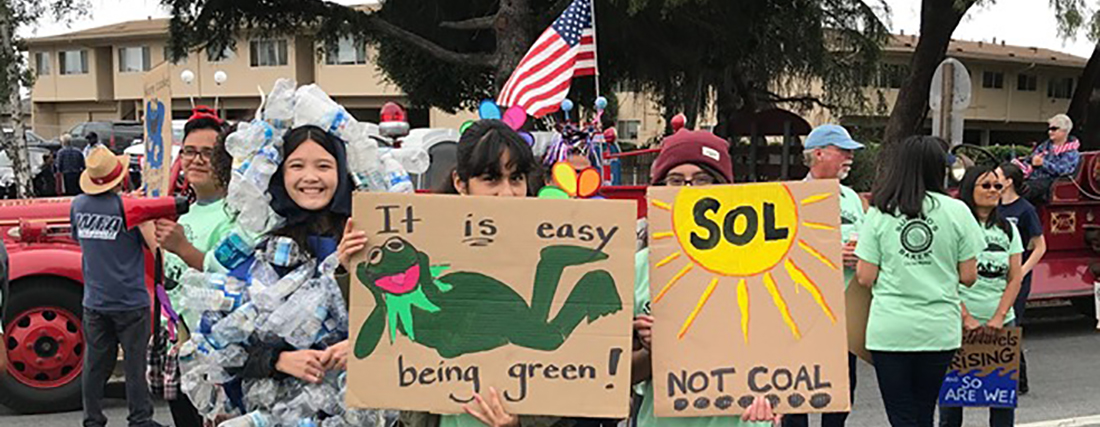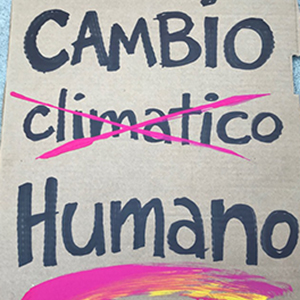ENGAGING CHILDREN AND YOUTH
— Tori Derr —
Placemaking is the participatory act of imagining and creating places with other people. It cultivates a sense of hope and possibility.
Not only are children’s perspectives important in their own right, but their positive outlook is infectious for adults as well as an inspiration for intergenerational action.
No one knows what the future is going to bring, but it is certain that we will have to live more sustainably.
As part of this transformation, we can choose to move toward a world that reveals a spirit of community and shared resourcefulness. And we can create openings for children and youth to be a part of these efforts, to be a part of strong democracies (Derr, Chawla, & Mintzer, 2018, p. 2).
Youth participatory action research (often referred to as YPAR) and participatory planning are tied to nearly 60 years of international efforts to establish processes of inclusion.
In 1989, participatory principles were extended to children with the United Nations’ adoption of the Convention on the Rights of the Child (CRC). The CRC deemed that children have a right to voice their opinions on decisions that shape their environments and to have these rights taken seriously (Hodgkin & Newell, 1998).
In the year 2000, activist academics and international development experts who worked with children gathered for a symposium in Oslo, Norway to seek consensus on rights-based principles for Children’s Participation in Community Settings (Chawla, 2002).
With attention to the Convention on the Rights of the Child, they agreed on basic conditions for participatory projects that translate children’s rights into action, including that research projects create opportunities for the development of competence.
These frameworks have created a theoretical and practical approach to engaging young people in shaping their cities that guides much international research and action today.
To date, the CRC has been ratified by all United Nations member nations except the United States. This means that in the United States, realization of these rights often happens at a local level, based on the understanding and commitments of local governments and institutions (Derr et al., 2013).
However, most international frameworks, including the United Nations SENDAI Framework for Disaster Risk Reduction provide provisions for youth participation.
In fact, many community engaged research projects involve children and youth as a way to understand and promote sustainability. In December of 2019 the intergovernmental Declaration on Children, Youth, and Climate Action was signed at COP 25 in Madrid, Spain through the support of CERI and UNICEF. This declaration is the first of its kind to commit to inclusive, child- and youth-centered climate policies and action, both at national and global levels. Currently, there are 12 government signatories, and all member nations are invited to sign.
***
The recent publication Placemaking with Children and Youth: Participatory Practices for Planning Sustainable Communities (Derr, Chawla, & Mintzer, 2018). . . highlights more than 20 years of engagement, highlighting ways that young people can be involved in research and action within their communities.
Many of the projects highlighted in the excerpts below involve partnerships: between cities and universities, universities and communities.
While some people suggest that children should be a part of decision making because they will inherit the outcomes, we assert that children have rights to participate not because they are becoming adults, but because they already have rich thought and creative energies to contribute, just as they are.
Placemaking with Children and Youth: Participatory Practices for Planning Sustainable Communities, Victoria Derr, Louise Chawla, and Mara Mintzer, New Village Press, 2018.
“This wonderful book recognizes that sustainable development calls for highly participatory local communities, including children and youth, who can cooperatively plan for and flexibly respond to environmental change. Based on this engaged view of citizenship, it offers a comprehensive range of practical methods for everyone.”
— Roger Hart, Professor, Psychology and Geography, Graduate Center of the City University of New York; author, Children’s Participation
These attached excerpts provide an overview of the primary principles of participation including local and place-based, transparent, inclusive, educational for all parties, sustainable, and playful. They also provide examples that specifically highlight children and youth engagement in climate change and resilience including:
- Using Music Video to Spread the Word: Youth Becoming Flood Resilient Citizen Scientists (Pages 92-93)
- Participatory Video with Lens on Climate Change and Filipino youth (Pages 96-98)
- Participatory Video for Climate Change Adaptation and Disaster Risk-Reduction (Page 99)
- Drama and the theatrical production of SHINE! (Pages 111-112)
- Performance art and co-design through the Lookout Interactive project in New Zealand (Pages 111-112)
- Drawings to Understand Resilience in Boulder, Colorado and Mexico City (Page 71)
- Murals that reflect values and the city’s resilience (Page 75)
- Youth Creating Disaster Recovery and Resilience Project, a partnership between the U.S. and Canada (Page 141)
- Parks that Flood (Page 158)
- #OurChangingClimate workshops coordinated from the University of California, Davis (Page 206)
- A schoolyard greening project designed to improve air quality and reduce heat island effects in Ontario, Canada (Pages 280-286)
- A neighborhood design project that engaged children, youth, and university students in a process of considering how to increase density and child-friendliness of a city that integrated a wide range of sustainable features from Boulder, Colorado (Pages 302-309)
Literature Cited
Chawla, L. (2002). Growing up in an urbanizing world. UNESCO/Earthscan.
Derr, V., Chawla, L. & Mintzer, M. (2018). Placemaking with Children and Youth: Participatory Planning for Sustainable Communities. New York: New Village Press.
Derr, V., Chawla, L., Mintzer, M., Cushing, D. F., & Van Vliet, W. (2013). A city for all citizens: Integrating children and youth from marginalized populations into city planning. Buildings, 3(3), 482-505. Available from:


